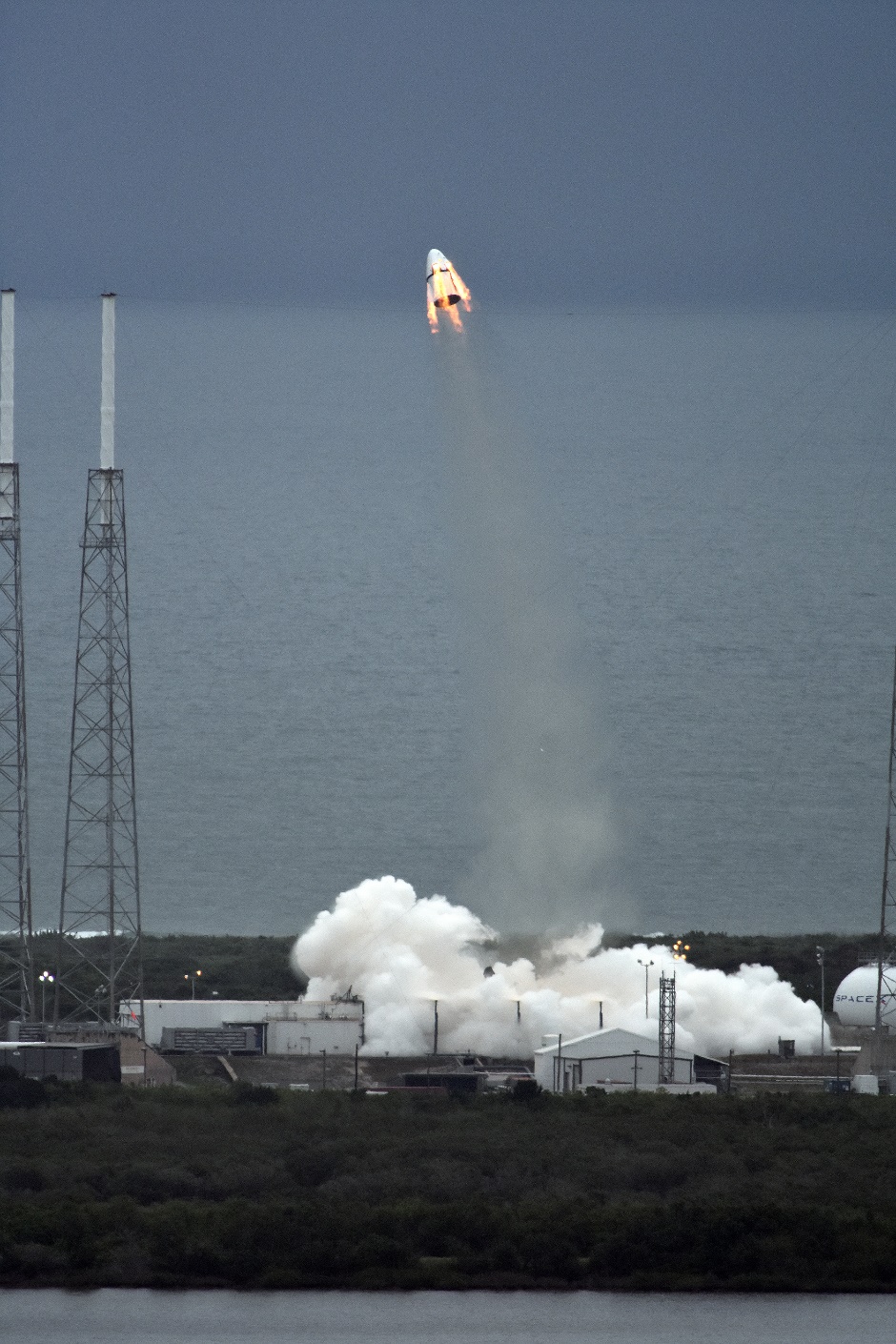CREW DRAGON FACT SHEET
By Cliff Lethbridge

Crew Dragon Launch, Photo Courtesy SpaceX
Classification: Space Capsule
Height: 23.6 feet
Diameter: 12 feet
Date of First Cape Canaveral Launch: May 6, 2015
Date of Final Cape Canaveral Launch: May 6, 2015
Number of Cape Canaveral Launches: 1
Crew Dragon is a manned space capsule introduced by SpaceX for the purpose of ferrying astronauts to and from the International Space Station. A Crew Dragon space capsule was launched from Launch Pad 40 on May 6, 2015 to validate that the spacecraft can fire away from a rocket in the case of an in-flight emergency. While the Crew Dragon will ultimately be launched atop a Falcon 9 rocket, the Crew Dragon for this test flight was launched from the ground. The Crew Dragon is powered by eight Super Draco engines which burn hydrazine/nitrogen tetroxide liquid fuel and can each produce a thrust of 15,000 pounds. The Super Draco engines are integrated directly into the sides of the spacecraft, as opposed to being located atop the spacecraft as in other escape rocket applications. This configuration allows astronauts escape capability from the launch pad all the way to orbit. It also allows the Super Draco engines to fire as retrorockets when the spacecraft is recovered on land.
In the test flight, the eight Super Draco engines were ground lit simultaneously and reached maximum thrust in a matter of seconds, propelling the spacecraft off the launch pad. After a half second of vertical flight, the spacecraft pitched toward the ocean. The Crew Dragon traveled from 0 to 100 m.p.h. in 1.2 seconds, eventually reaching a maximum velocity of 345 m.p.h. The abort burn was terminated once all fuel was consumed, then the spacecraft coasted to its highest point. The trunk of the spacecraft was then jettisoned and Crew Dragon began a slow rotation with its heat shield reoriented toward the ground. Small drogue parachutes were deployed following trunk separation. Once the drogue parachutes stabilized the spacecraft, three main parachutes were deployed to further slow the spacecraft before splashdown. Less than two minutes after ignition, Crew Dragon splashed down just downrange of the launch pad. While this test was unmanned, Crew Dragon carried a dummy equipped with a number of sensors. Sensors indicated that had astronauts been aboard, they would have been fine.


